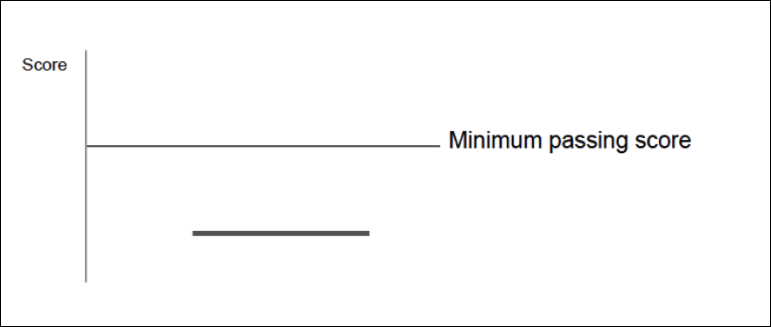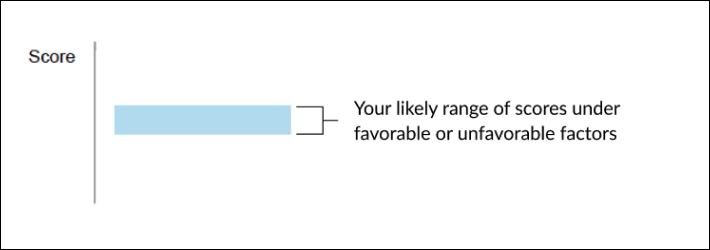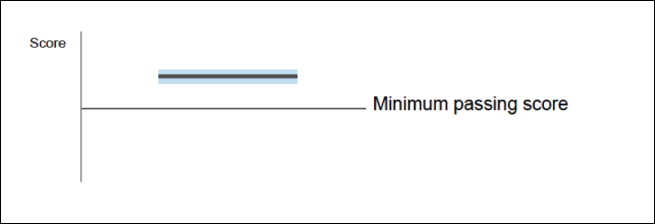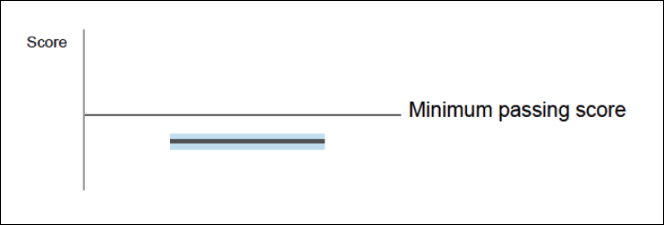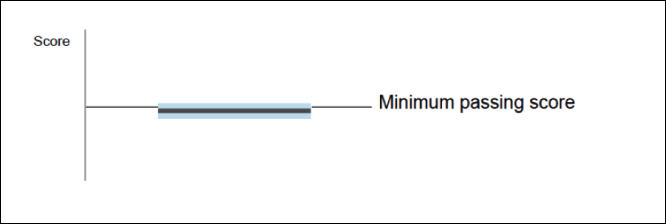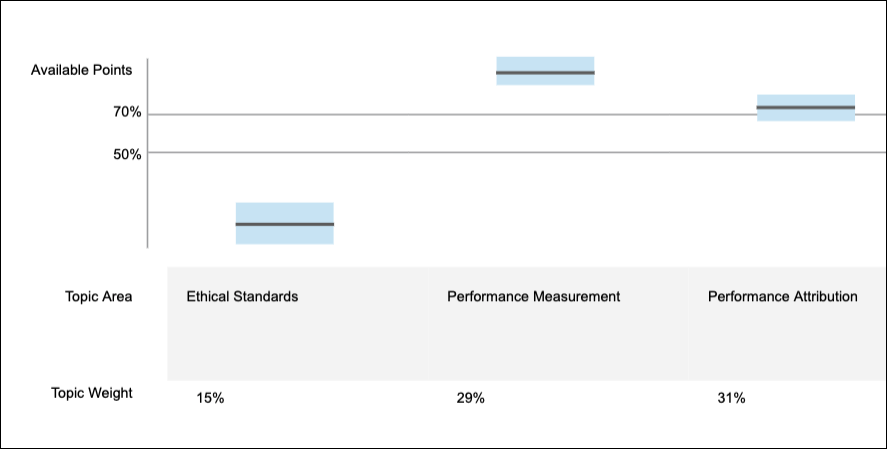Understanding Your CIPM Exam Result
Your Performance on the Exam
After you complete the CIPM® Program exam, we want to ensure you have the information needed to prepare you for the next step in your journey, whether that is preparing for the next level, signing up to retake the same level, or pursuing other opportunities. Your score report gives you important information to use in your decision. Let’s look at the elements one by one.
Your Score
The first thing to notice is the thin solid gray line (
The thick gray line (
- If it lies above the MPS line, you passed.
- If your score lies below the MPS line, you unfortunately did not pass.
Note: Due to the scale and the way the graphics are rendered, scores that were very close to the minimum passing score may appear to brush against or slightly overlap the minimum passing scoreline.
CFA Institute permits candidates to make factual statements about their exam performance, which includes posting the details of exam performance on social media. However, please note that any such posting must be accurate and should include the year in which the results were achieved.
True Ability
Your score on the exam is influenced by many factors. The most important of these is your true ability, or how thoroughly you know the material. If we could ask you an unlimited number of questions under ideal circumstances, we would eventually be able to determine your true ability. That is not possible, so other factors may influence your score either favorably or unfavorably.
Favorable Factors
- We sampled from topics and learning outcomes for which you were better prepared
- You ate and slept well prior to the exam
- You had particularly lucky guesses
- The testing environment was comfortable
Unfavorable Factors
- We sampled from topics and learning outcomes for which you were less prepared
- You slept poorly or were particularly nervous
- Your guesses were unlucky or you made a simple error on a question you would normally get correct
- The testing environment was distracting or uncomfortable
We do our best to control as many of these elements as we can, and your score on the exam represents our best estimate of your true ability. The confidence interval (
Confidence Interval
The light blue box around your score (
Score and Confidence Interval Above the MPS
A candidate who scores very well could have high confidence that they would have passed under nearly any circumstance.
Score and Confidence Interval Below the MPS
A candidate who scores very poorly can have high confidence they would not have passed under nearly any circumstance, and would need to study much more in order to pass in the future.
Score Below the MPS but Confidence Interval Overlaps the MPS
A candidate who scored close to the MPS might have passed under some sets of circumstances, but in most cases would not have passed. With a little more studying, this candidate can push the odds in his or her favor.
Your Performance by Topic Area
The topic area presentation is very similar to the presentation used on the overall exam, though there are a few important differences.
Signal of Topic Mastery
Note there is not a separate passing score for each topic. Strong performance in one topic area can offset weak performance in another. Therefore, instead of representing the minimum passing score, the thin gray lines (
Confidence Interval
You will also notice the confidence interval box (


